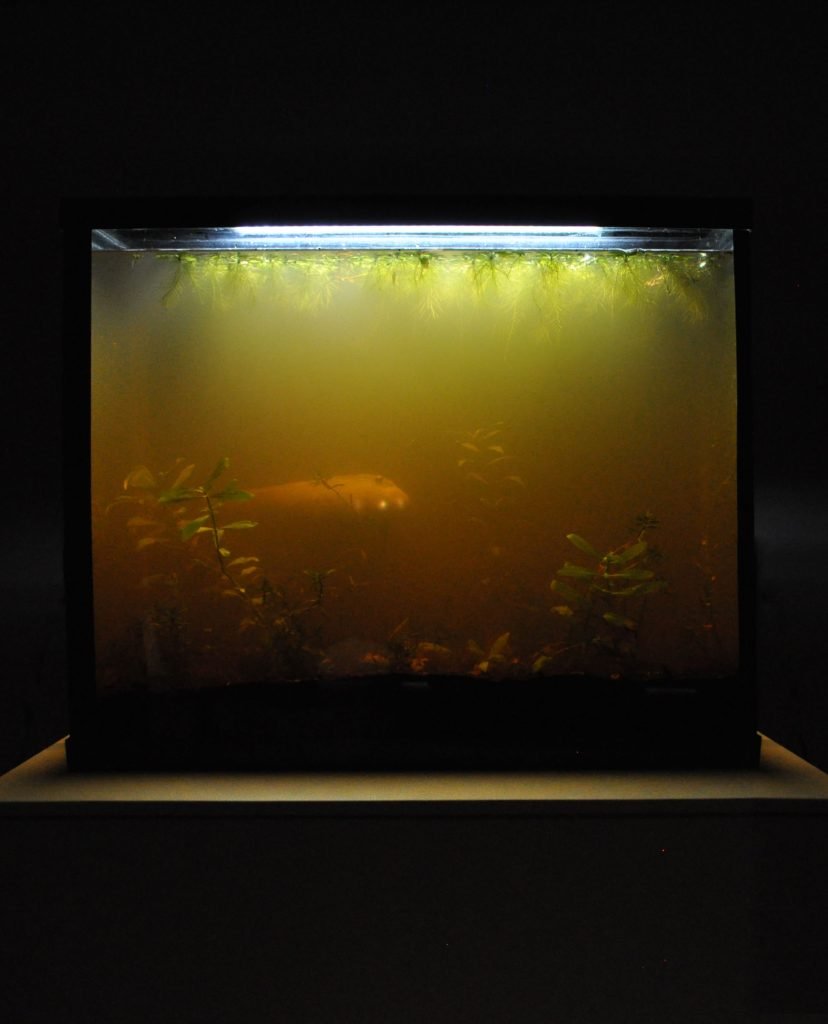
‘Hirudinea lampyris: The Firefly Leech’ by Lauren Thu
BDes Industrial Design (2017-2021)
Emily Carr University of Art and Design, Vancouver, Canada.
Key supervisors: Louise St. Pierre, Sophie Gaur
Our history with the Firefly Leech begins in the late 1900’s, as the Industrial Revolution began to gain traction in the West. Fredrick Taylor published a text called The Principles of Scientific Management. This work, encouraging factories to go further in their exploitation of workers by valuing efficiency systems over living beings, enraged the general public and incited the Factory Riots of 1911. Lead by the Imagination Effort, the Factory Riots destroyed many major factories, including Ford and General Motors, who were both car manufacturers at the time. The Factory Riots changed the way the West developed.
Throughout the 20th century, science shifted from the pursuit of knowledge of, towards the understanding of knowing with. Forestry and Oil industries began a downturn as cellulose bioplastics and bio-fuel began to boom in the 1950’s. This integration and new respect of nature and technology lead to locating many new species previously on the brink of extinction due to past industrial concepts.
As part of a connection trek in British Columbia’s West Coast Forest Region in 1974, scientists met Hirudinea lampyris, commonly called the Firefly Leech. The Firefly Leech has an incredible ability to identify emotional markers in hormones within the blood of it’s prey, and communicates these complicated structures through photophores in it’s skin – making it bioluminescent. For the past 50 years, humans have been recording and monitoring the light patterns, but even after recent developments with non-invasive metabarcoding, the complexities of the light combinations are difficult to decipher due to our limited directory of feelings. Scientist Marit Karr likens the emotional onboarding of the leech to color vision: “Many species are able to see further spectrums of colour than the human species does, such as UV and polarized light. The Firefly Leech is similar, we can presume that it’s understanding of emotion is similar to a Mantis Shrimp’s understanding of colour.”
____
Design fiction as a mode of dismantling is inherent in its form. When we are able to look beyond current barriers, be they political, societal, or environmental, we can catch glimpses of possibilities not yet set in stone. The weight of reality and its rules do not apply, and we are unobstructed from rhizomatic pathways of thinking.
To extend our thinking beyond the now, suspending our disbelief is critical. Hirudinea lampyris is a design fiction project that investigates the complexities of sustainability and asks how empathy can be used towards heterarchical ways of thinking. Conversations around sustainability often center around the human, and what the human can do to reverse or slow our self-destruction. The separation of ourselves from other beings, both environmentally and ontologically, creates false hierarchies and refuses the value of other species’ contributions. What does it look like to value the work of an earthworm? What shifts would need to happen for understanding the entangled reverb of ours and other species’ actions?
Hirudinea lampyris uses a counterfactual narrative to reset the world that we live in. Positing a catalyst at the height of Taylorism, the Factory Riots of 1911 imagine an uproar against the publishing of Fredrick Taylor’s Principles of Scientific Management, and it’s allusion to imagination and idle thought being useless and frivolous. The collective shift away from the reverence of efficiency moves society towards a reevaluation of thinking, making, and producing in general. Environmental destruction is scaled back, and many species, unknown and extinct in our world, become champions of this world.
In this fiction, the Firefly Leech is introduced as one of these champions. The leech is hematophagous, and through a chemical reaction between the hirudin in its saliva and the hormones in the food that it eats, the Firefly Leech displays the emotions state of its last prey through bioluminescence in its skin. Through non-invasive metabarcoding, biologists are able to identify the host species the leech last fed on, and are able to get an empathetic profile on the ecosystem that it lives in.
For this project, I have spent time building a physical prototype of a robotic swimming leech, fake publications, digital sharing material, and a short narrative film. I believe that the use of props is important in design fiction, as tangible objects act as stepping stones into other worlds. Physicality helps bring an audience back down after the work is shown. Once a design fiction is told, making meaningful connections towards our current reality is necessary for the work to function as design. Imagination is encouraged in children and often forgotten in adults – yet our sense for and ability to imagine is intrinsically tied to our hope for a future. Fiction is a way to open up our imaginations, design fiction is a way to open up and to stay open.
Lauren Thu / BDes Industrial Design / Emily Carr / 2017-2021
Lauren Thu is a recent graduate of Emily Carr University of Art + Design, her work focuses on research and critical engagement with sustainability, technology, and storytelling. Her work and writing has been published by Plurality U+ and Onomatopee, and most recently was the recipient of the DESIS Radical Sustainability Award.
design fiction, counterfactuals, ecology, critical design, speculative design, storytelling, other-than-human






